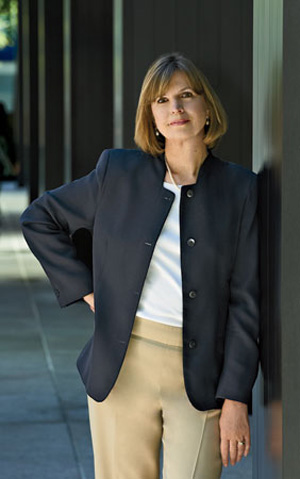A modernist icon that married architecture and pedagogy remains influential today.
When the Crow Island Elementary School in Winnetka, Illinois opened in 1940, it launched a revolution in the architecture of schools. Designed by Eliel and Eero Saarinen, and the Chicago firm then known as Perkins, Wheeler & Will, the welcoming, low-slung, one-story brick building, with a slender, beacon-like clock tower, was hugely influential in the postwar rush to construct new schools for the incoming tide of baby boomers. The earlier 20th-century model of stately, historicist multistory school buildings, that spoke more to the aspirations of town fathers than to the comfort and teaching of children, became obsolete.

Today the design of the Crow Island school looks inevitable, but what was especially radical in its day was the way it married progressive ideas of pedagogy with architecture: rooms were scaled for children, with comparatively low 9-foot ceilings; there was pint-size furniture (much of it designed by Eero Saarinen in molded wood), L-shaped classrooms with space for a kids' workshop, and generous low windows to bring in daylight and let teachers keep an eye on children at play in the courtyards off each room.
In our special section this month, Schools of the 21st Century, we bring you a collection of schools that reflect Crow Island's values. The projects in these pages don't look like the ubiquitous one-story brick buildings spawned everywhere in the 1950s and '60s in imitation of Crow Island (which often lacked many of its special touches).
What today's best schools have in common with their forebear are designs that respond to a particular pedagogy. Wilkes Elementary School on Bainbridge Island near Seattle, by Mahlum Architects, embraces a broad spectrum of learning styles as well as the educational value of play, with transparent connections between classrooms and out to courtyards and play areas. Similarly, the expansion of the Sequoyah K-8 independent school in Pasadena, California, by the firm Fung+Blatt Architects includes not only flexible classrooms but an easy flow to the outside, especially the individual verandas off each room. Public School 330 in Queens, New York, by Murphy, Burnham & Buttrick is rooted in an environment far different from Wilkes or Sequoyah, a bustling urban neighborhood of recent immigrants: its extensive use of glass for views in and out gives a sense of transparency and easy orientation. What these and other progressive schools foster today is an openness that invites parents and communities to participate in the education process.
At a much larger scale of community, we also explore in this issue the completion of two vital projects at Ground Zero in New York City: One World Trade Center, now the tallest building in the western hemisphere, and the Fulton Center, an infrastructure project proposed as part of the rebuilding after 9/11 that brings together a complex tangle of subway lines in lower Manhattan. Fulton serves a large public: 300,000 passengers a day pass under its grand, daylit vaulted interior. The design of its neighbor, One World Trade Center, was meant to respond to the desires of an even vaster community'not only of New Yorkers who lived through the attacks but Americans in general, and those in the world at large, who looked for a transcendent work of architecture in that place of horrific tragedy. Read the story by critic Sarah Williams Goldhagen, who takes the measure of this towering new landmark and learn why she finds it comes up short.





Post a comment to this article
Report Abusive Comment